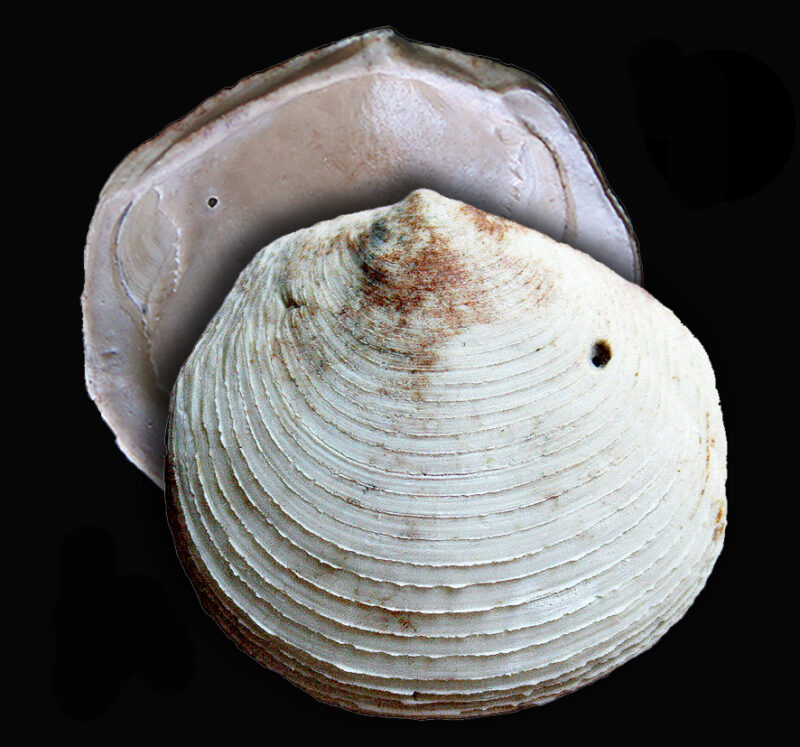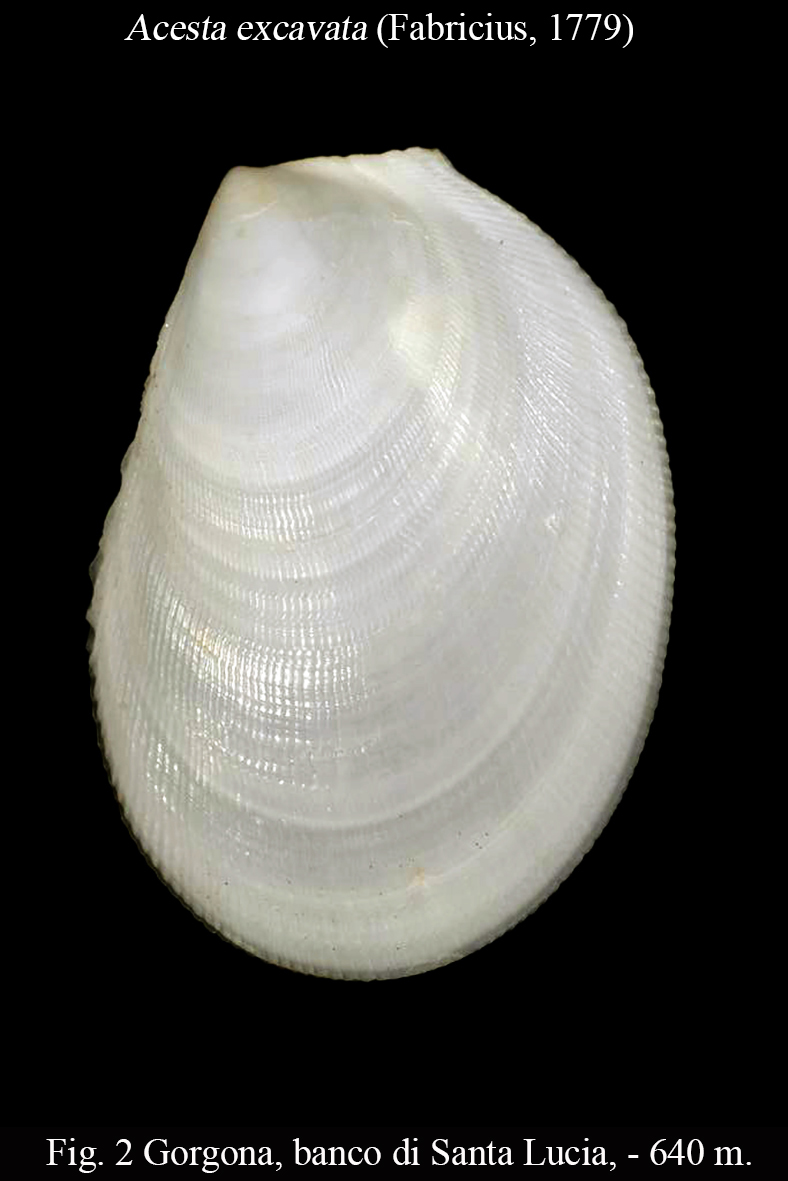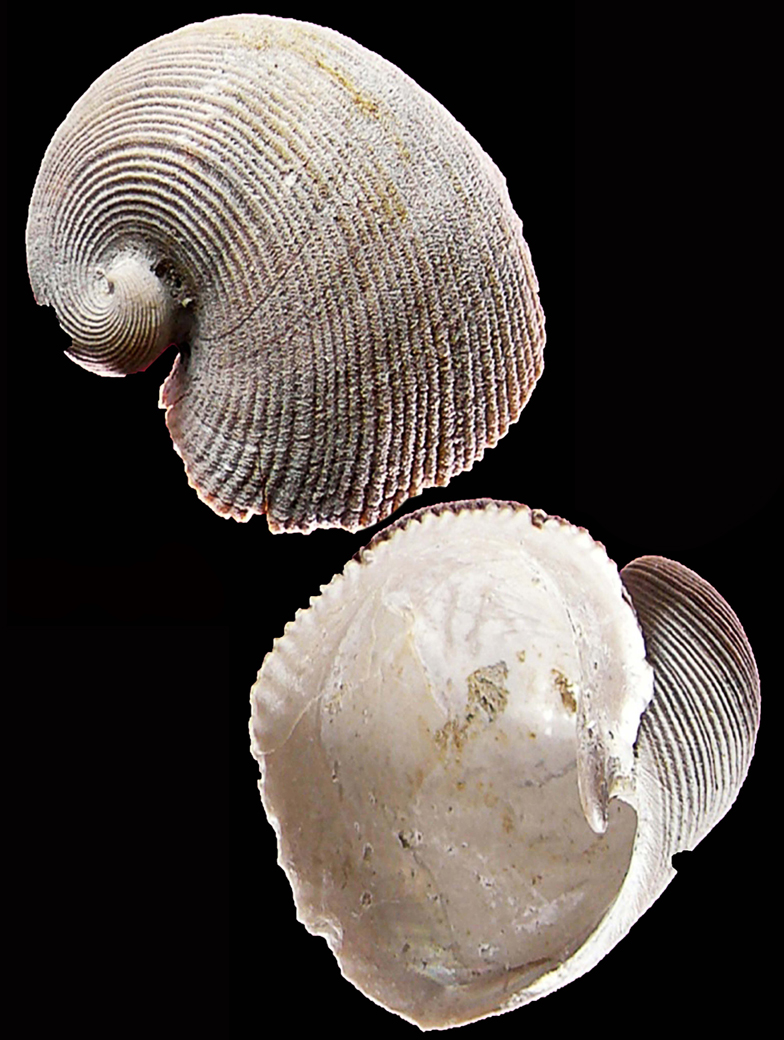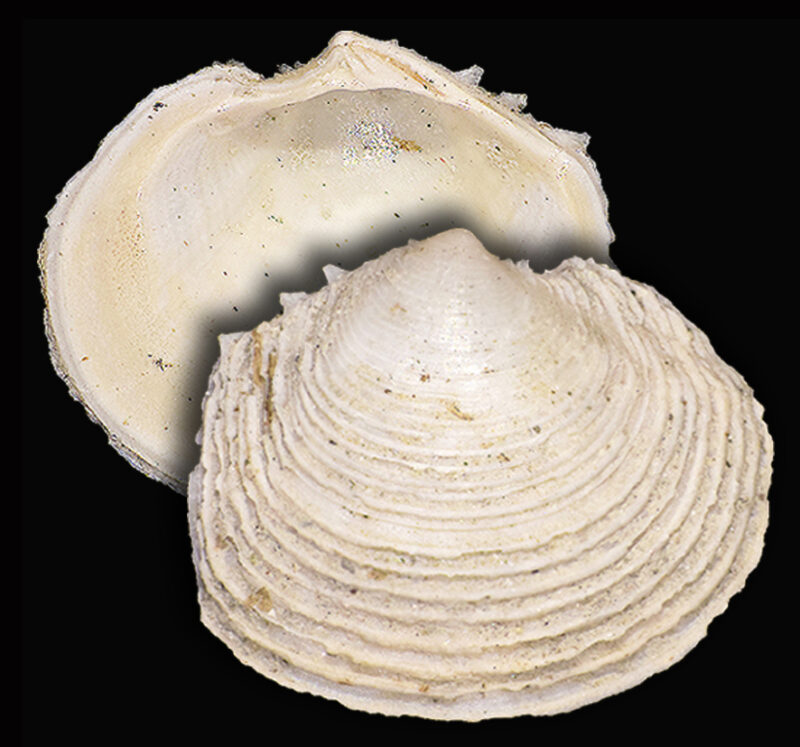Class Bivalvia
Family Lucinidae J. Fleming, 1828
Genus Myrtea W. Turton, 1822
species Myrtea spinifera (Montagu, 1803)
Myrtea spinifera (Montagu, 1803) (Mollusca – Bivalvia – Lucinidae) is the most common species, in the genus Myrtea W. Turton, 1822, between the italian Pliocene representatives of this family. It can be found in both sandy and clayey sediments.
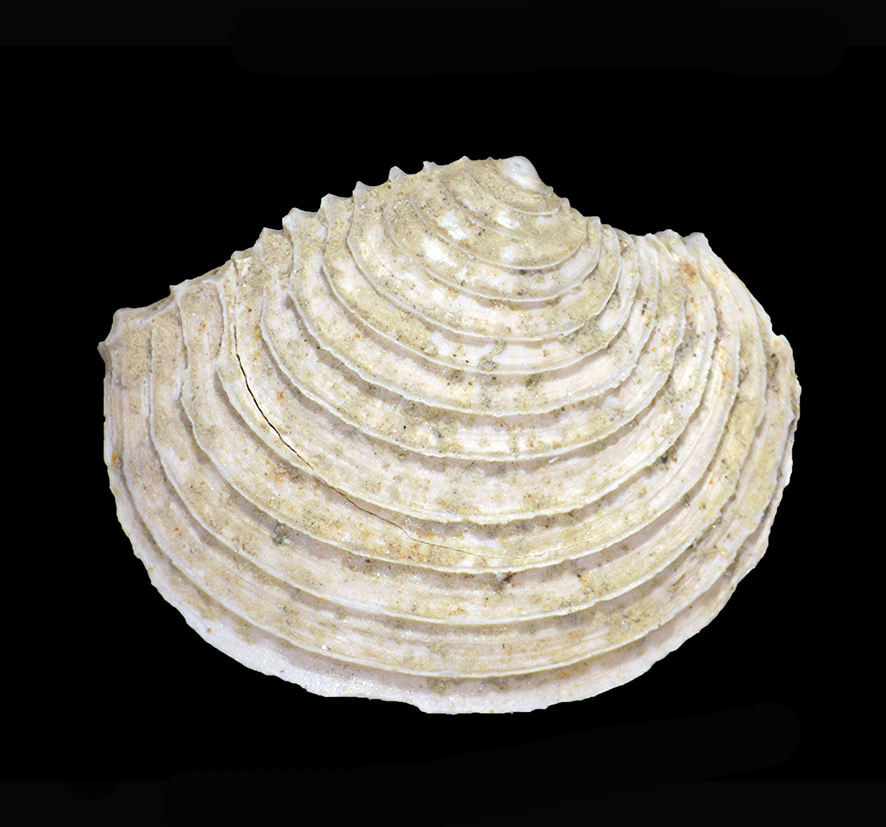
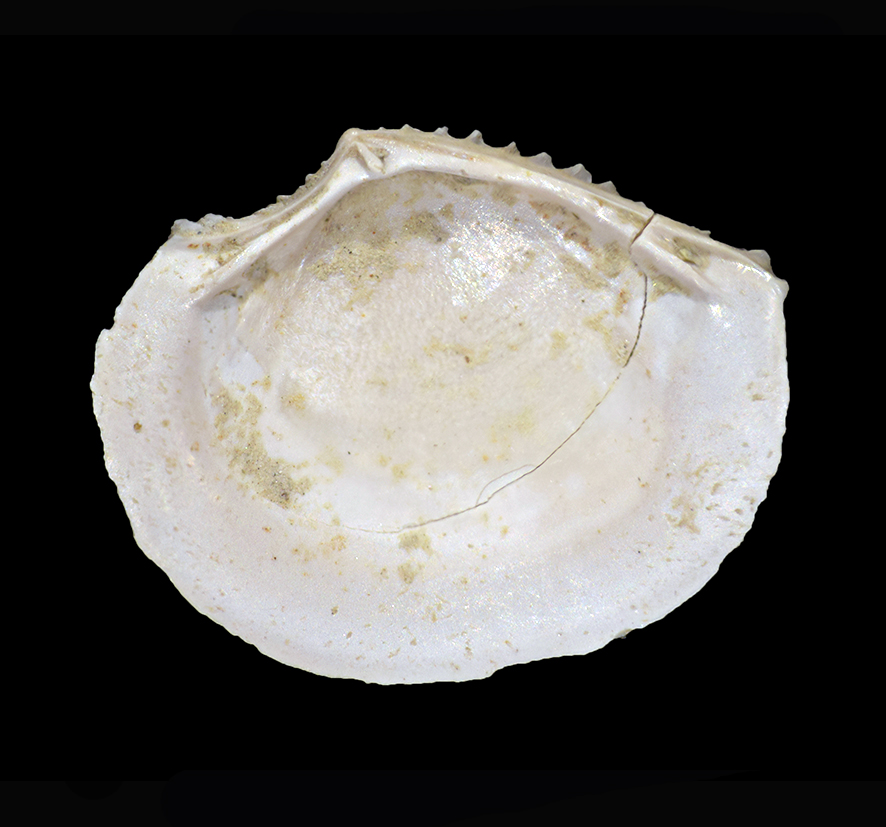
Myrtea spinifera (Montagu, 1803) (Mollusca – Bivalvia – Lucinidae) is the most common species, in the genus Myrtea W. Turton, 1822, between the italian Pliocene representatives of this family. It can be found in both sandy and clayey sediments.
Original description: Venus spinifera
with a sub-oval, sub-triangular, yellowish-white shell, wrought with numerous, fine, concentric, parllel, equidistant, elevated, and somewhat reflected ridges, about thirty six in number: these ridges at the anterior side, on the margin of the cartilage slope, on both valves, become confluent in pairs, and form short, obtuse spines, reflecting backwards; this double row of spines forms a deep cavity for the cartilage: umbo small, nearly central, and turned a little to one side, beneath which, is a strong, lanceolate, cordiform depression. Inside smooth, white; hinge furnished with a single primary tooth, and a small cavity in each side in one valve, which locks in between, and reciprocally receives two in the other valve; the former has half also a remote, lateral lamina on each side, which the latter is destitude of, or very obsolete: the margins are plain. Lenght half an inch; breadth rather more.
pp. 577-579 of:
Montagu G., 1803. Testacea Britannica or natural history of British shells, marine, land, and fresh-water, including the most minute: Systematically arranged and embellished with figures. White, London. Vol. 2, pp. 293-606, pl. 1-16.
https://www.biodiversitylibrary.org/item/78694#page/7/mode/1up
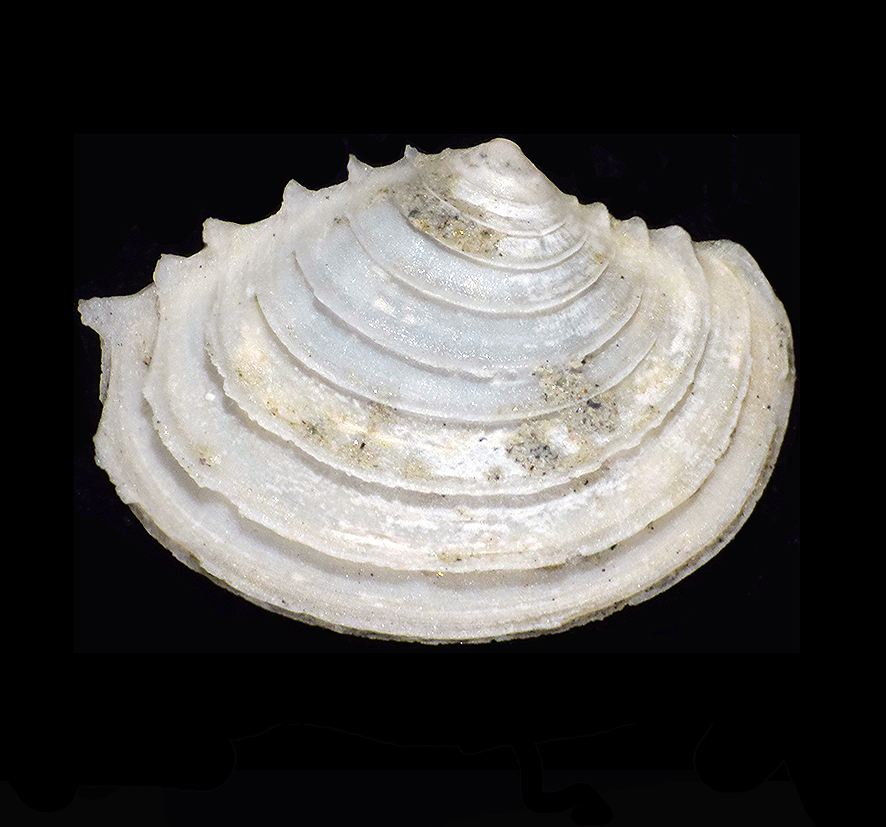
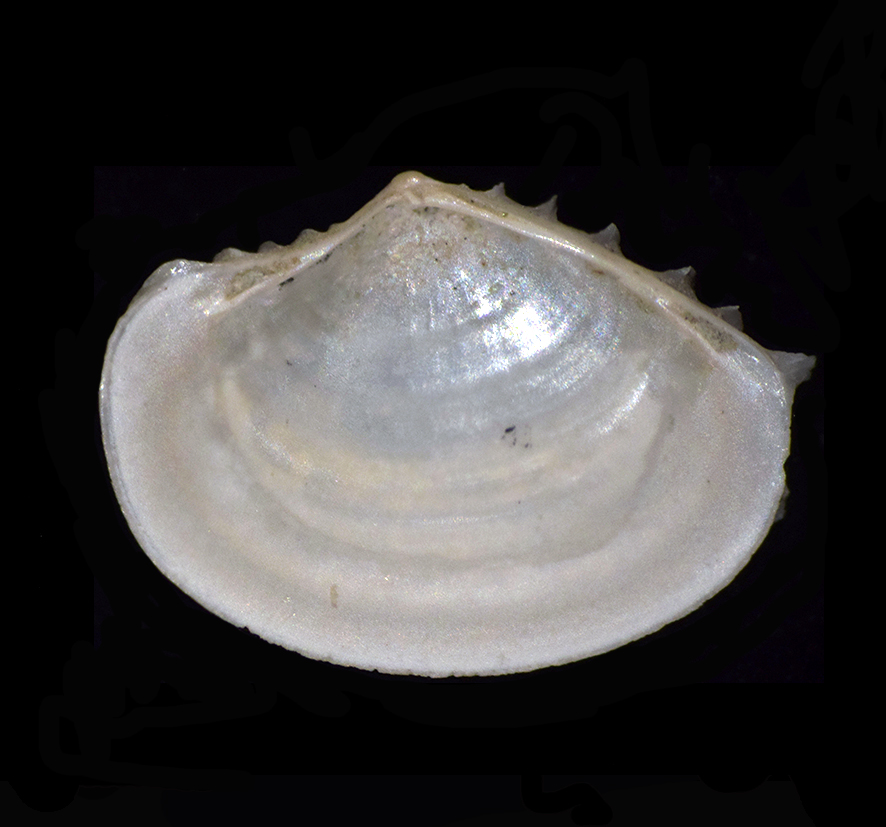
Distribution
From the Burdigalian of the Mediterranean and Northeastern Atlantic (France), to the Present-day, with a similar distribution.
Bibliographic references and some more common synonyms
Venus spinifera Montagu, 1803: 577–579
Lucina astensis Bonelli – Michelotti, 1839: 25
Lucina (Myrtea) spinifera (Montagu) – Sacco, 1901: 93, l. 21, figs 8–23
Myrtea spinifera var. astensis Sacco, 1901: 94, pl. 21, figs 11–14
Lucina (Myrtea) spinifera Montagu – Cerulli Irelli, 1909: 180–181, l. 24, figs 25–32
Myrtea (Myrtea) spinifera (Montagu) – Robba, 1968: 496–497, l. 38, figs 6a–b.
Myrtea (Myrtea) spinifera (Montagu) – Malatesta, 1974: 78, l. 7, fig. 5
Myrtea spinifera (Montagu) – Caprotti, 1976, p. 5, pl.6, fig. 4.
Myrtea (Myrtea) spinifera (Montagu) – Menesini, 1977: 260
Myrtea (Myrtea) spinifera (Montagu) – Brunetti, 2014: 85, unnumbered fig.
Myrtea spinifera (Montagu) – Chirli, 2015. pp. 65-68, pl. 15, figs 8-15.
Myrtea astensis (Sacco) – Brunetti & Cresti, 2018: 134, figs 605.
Myrtea spinifera (Montagu) – Brunetti & Cresti, 2018: 134, figs 606.
Myrtea spinifera (Montagu) – Dominici et al., 2020, p. 100.
References
Brunetti M.M. (2014). Conchiglie fossili di Monte Antico. Tipolito 2000 group, Campi Bisenzio, Firenze, 118 pp.
Brunetti M.M. & Cresti M. (2018). I fossili di Orciano Pisano, Atlante iconografico. edizioni Danaus, Palermo, 232 pp.
Caprotti E. (1976). Malacofauna dello stratotipo Piacenziano (Pliocene di castellarquato). Conchiglie, 12(1-2): 1-56.
Cerulli-Irelli S. (1909). Fauna Malacologica Mariana. Palaeontographia Italica, 15: 142–231.
Chirli C., (2015). Malacofauna Pliocenica Toscana. Vol. II. Bivalvia, Heteroconchia Hertwig, 1985. Chirli C. Ed., Tip. Vanzi, Colle di Val d’Elsa (Siena), 233 pp.
Cresti M. & Forli M. (2018). On some Pliocene Lucinidae J. Fleming, 1828 (Bivalvia) from Orciano Pisano (Pisa, Italy) with the proposal to establish a new species: Alucinoma (?) persquamulosa (Sacco, 1901). Biodiversity Journal, 2018, 9 (4): 411–424
Dominici S., Forli M., Bogi C., Guerrini A. & Benvenuti M. (2020). Paleobiology from museum collections: comparing historical and novel data on upper miocene molluscs of the livorno hills. Rivista Italiana di Paleontologia e Stratigrafia, 126 (1): 65-109.
Malatesta A. (1974). Malacofauna Pliocenica umbra. Memorie per servire alla descrizione della Carta geologica d’Italia, 13: 1–498.
Menesini E. (1977). Studio di una malacofauna del Pliocene medio del bacino della Fine (Toscana Marittima): osservazioni paleoambientali. Atti della Società Toscana di Scienze naturali, Memorie, Serie A, 83: 251–271.
Michelotti G., 1839. Brevi cenni di alcuni resti delle classi Brachiopodi, ed Acefali, trovati fossili in Italia. Annali delle Scienze del Regno Lombardo Veneto, 3:1–38.
Montagu G. (1803). Testacea Britannica or natural History of British Shells, Marine, Land, and Fresh-Water, Including the Most Minute: Systematically Arranged and embellished with Figures. J. White, London, Vol. 1, xxxvii + 291 pp. and Vol. 2, 293–606.
Robba E. (1968). Molluschi del Tortoniano tipo. Rivista Italiana di Paleontologia e Stratigrafia, 74: 457–616.
Sacco F. (1901). I Molluschi dei Terreni Terziari del Piemonte e della Ligura. Parte xxIx, C. Clausen, Torino, 214 pp.
We thank our friend Massimo Cresti for the execution and use of the photos.

